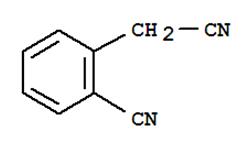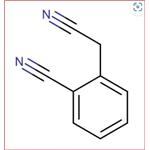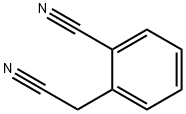Homophthalonitrile-Application
Homophthalonitrile are a relative new class of commercial high performance engineering thermosets. They exhibit very high thermal and oxidative stability, and outstanding high-temperature properties. Infact, Homophthalonitriles have one of the highest decomposition temperature of all organic thermoset polymers which can approach 500℃ in air[1-4]. They also exhibit no Tg before decomposition when post-cured, and thus, have no viscoelastic transition before thermal decomposition. Other important benefits include very low water uptake, outstanding structural integrity when exposed to excessive heat or fire, and excellent corrosion resistance. In addition, the high aromatic content and high crosslink density of the homophthalonitrile thermosets yields a high char content of about 80 to 90% when pyrolyzed to 1000℃ under inert conditions. Both, the high thermal stability and the high char yield contribute to the outstanding high-temperature performance. However, homophthalonitriles have also some major limitations and shortcomings. For example, they are very expensive and difficult to process, relative to conventional thermoset resins.
Recently, a new class of Homophthalonitrile resins has been developed, the so-called second-generation PEEK-like phthalonitriles. These new resins allow for more cost-effective manufacturing due to a simpler two-step and one-pot cure and cheaper starting materials. The oligomeric resins are liquid above 70℃ and polymerize to thermosets above 150℃, allowing for an ample processing temperature window. For example, composites can be produced by well-established industrial methods such as resin transfer molding (RTM) and resin infusion molding (RIM), and by other low-cost manufacturing techniques. Furthermore, the low melt viscosity and larger processing window makes the fabrication of thick composite parts possible where the melt has to impregnate thick fiber preforms.

Fig 1. Chemical structure formula and three-dimensional structure of HOMOPHTHALONITRILE
Homophthalonitrile resins can be prepared by nitro-displacement of nitro-phthalonitriles with phenoxyphenols in the presence of a base. The reaction is typically carried out in a solvent such as DMF to control the temperature of the reaction.
Homophthalonitrile are often an excellent choice for very demanding applications where high mechanical strength in combination with high temperature and flame resistance are required or advantageous. They can replace polyimides for demanding aircraft applications and vinyl esters and epoxy resins in structural composites in the transportation industry due to their good processability and superior physical properties. Other (potential) products include high temperature adhesives and coatings, electronic packaging resins, fire-resistant garments and building materials, as well as valves, seals, bushings, bearings, wind blade components and other structural parts that have to survive in harsh and hot environments. Homophthalonitrile can replace metals, ceramics and other high performance materials in many applications.
References
[1] US Patent No. 8,921,510 B1, Phthalonitrile Prepolymer Intermediates, Dec. 30, 2014
[2] US Patent Nos. 8,735,532; 8,859,712; 8,981,036; and 2017/0002146 A1
[3] CW (Composites World), Resins for the Hot Zone, V. McConnell. 8/18/2009
[4] US 2017/0002146 A1, Controlling Crosslinking Density and Processing Parameter of Phthalonitriles, Jan. 5, 2017.
You may like
Lastest Price from HOMOPHTHALONITRILE manufacturers

US $1.00/KG2024-07-14
- CAS:
- 3759-28-2
- Min. Order:
- 1KG
- Purity:
- 99%
- Supply Ability:
- 20t

US $15.00-10.00/KG2021-08-12
- CAS:
- 3759-28-2
- Min. Order:
- 1KG
- Purity:
- 99%+ HPLC
- Supply Ability:
- Monthly supply of 1 ton


